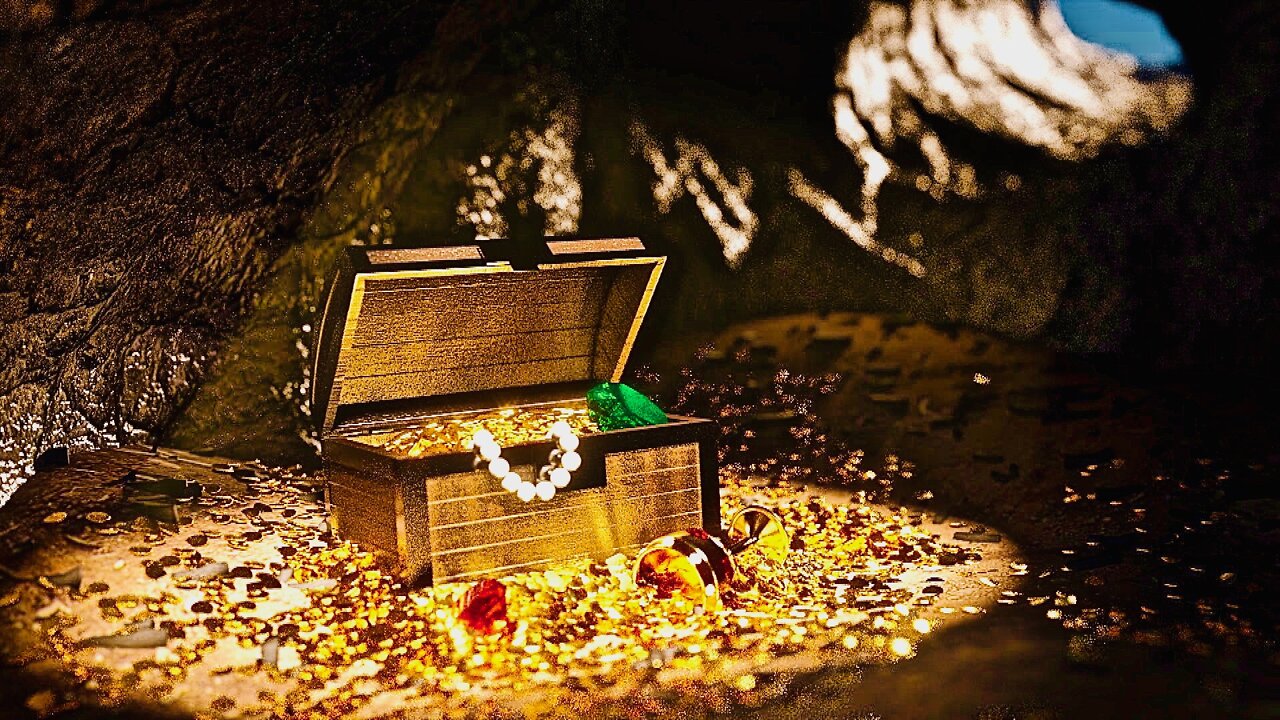Premium Only Content

History of Buried Treasure - Full Documentary
A buried treasure is an important part of the popular beliefs surrounding pirates and Old West outlaws. According to popular conception, criminals and others often buried their stolen fortunes in remote places, intending to return for them later, often with the use of treasure maps. Pirate treasure- In reality, pirates burying treasure was rare: the only pirate known to have buried treasure was William Kidd, who is believed to have buried at least some of his wealth on Long Island before sailing into New York City. Kidd had originally been commissioned as a privateer for England, but his behavior had strayed into outright piracy, and he hoped that his treasure could serve as a bargaining chip in negotiations to avoid punishment. His bid was unsuccessful, however, and Kidd was hanged as a pirate.
In English fiction there are three well-known stories that helped to popularize the myth of buried pirate treasure: "Wolfert Webber" (1824) by Washington Irving, "The Gold-Bug" (1843) by Edgar Allan Poe and Treasure Island (1883) by Robert Louis Stevenson. They differ widely in plot and literary treatment but are blood kin from the common ancestor of the William Kidd legend. David Cordingly states that "The effect of Treasure Island on our perception of pirates cannot be overestimated," and says the idea of treasure maps leading to buried treasure "is an entirely fictional device." Stevenson's Treasure Island was directly influenced by Irving's "Wolfert Webber", Stevenson saying in his preface "It is my debt to Washington Irving that exercises my conscience, and justly so, for I believe plagiarism was rarely carried farther... the whole inner spirit and a good deal of the material detail of my first chapters... were the property of Washington Irving."
In 1911, American author Ralph D. Paine conducted a survey of all known or purported stories of buried treasure and published them in The Book of Buried Treasure. He found a common trait in all the stories: there was always a lone survivor of a piratical crew who somehow preserved a chart showing where the treasure was buried, but unable to return himself, he transfers the map or information to a friend or shipmate, usually on his deathbed. This person would then go search in vain for the treasure, but not before transferring the legend down to another hapless seeker.
Famous and notorious cases
The Roman historian Dio Cassius says that, in the early 2nd century, the Dacian king Decebalus had changed the course of river Sargetia and buried tons of gold and silver in the river bed. Later he ordered the river to be restored and the slaves involved in the works to be executed. However one of his nobles revealed its location to the Romans. The Byzantine historian Jordanes tells a similar story of the burial of the Visigoth king Alaric I and his treasure under the river Busento in 410. The burial places of the Khazar kings (qoruq) and other inner Asian people were also under a rerouted river.[6]
There are a number of reports of supposed buried pirate treasure that surfaced much earlier than these works, which indicates that at least the idea was around for more than a century before those stories were published. For example, extensive excavation has taken place on Oak Island (in Nova Scotia) since 1795 in the belief that one or more pirate captains had stashed large amounts of loot there. These excavations were said to have been prompted by still older legends of buried pirate treasure in the area. No treasure has ever been reported to be found.
The Treasure of Lima is a supposed buried treasure on Cocos Island in the Pacific left there by pirates. The treasure, estimated to be worth £160 million, was stolen by British Captain William Thompson in 1820 after he was entrusted to transport it from Peru to Mexico
The only authenticated treasure chest in the United States, once owned by Thomas Tew, is kept at the Pirate Soul Museum in St Augustine, Florida.
Closer to modern times, the notorious drug lord, Pablo Escobar buried large sums of money in the form of US currency across Colombia. While a lot of it has been retrieved, large portions still remain buried.
Former corsair turned pirate, Olivier Levasseur known as "The Buzzard", is known to have hidden one of the biggest treasures in pirate history, estimated at over 4.5 billion euros, and leaving a cryptogram (with templar alphabet) behind with its whereabouts.
-
 2:53
2:53
Seeker Land
1 month agoHow 14 Wolves Changed The Path Of Rivers in Yellowstone Park - Amazing True Story
54 -
 LIVE
LIVE
megimu32
51 minutes agoOTS: Labor Day Sitcom Blowout - Tim, Ray, & Relatable Chaos!
296 watching -
 20:12
20:12
Clownfish TV
9 hours agoDisney Needs MEN Back?! They ADMIT Star Wars and Marvel are DEAD!
65715 -
 UPCOMING
UPCOMING
Anthony Rogers
8 hours agoEpisode 381 - Tim Kelleher
621 -
 1:01:42
1:01:42
The Nick DiPaolo Show Channel
6 hours agoTDS Hits New Level! | The Nick Di Paolo Show #1786
25.8K27 -
 1:02:27
1:02:27
Michael Franzese
3 hours agoFace to Face with a Former Chinatown Gangster Turned NYPD Detective
25.7K12 -
 1:31:25
1:31:25
The Confessionals
9 hours agoThe Queen of Heaven Exposed (Hathor, Lilith & Ancient Gods Return)
7.63K4 -
 LIVE
LIVE
LFA TV
15 hours agoLFA TV ALL DAY STREAM - TUESDAY 9/2/25
852 watching -
 LIVE
LIVE
LIVE WITH CHRIS'WORLD
6 hours agoLIVE WITH CHRIS'WORLD - IT WORKED IN D.C. & IT WILL WORK IN CHICAGO
116 watching -
 40:44
40:44
Ohio State Football and Recruiting at Buckeye Huddle
5 hours agoOhio State Football: 10 Things We Learned From Rewatching the Texas Win
3.77K